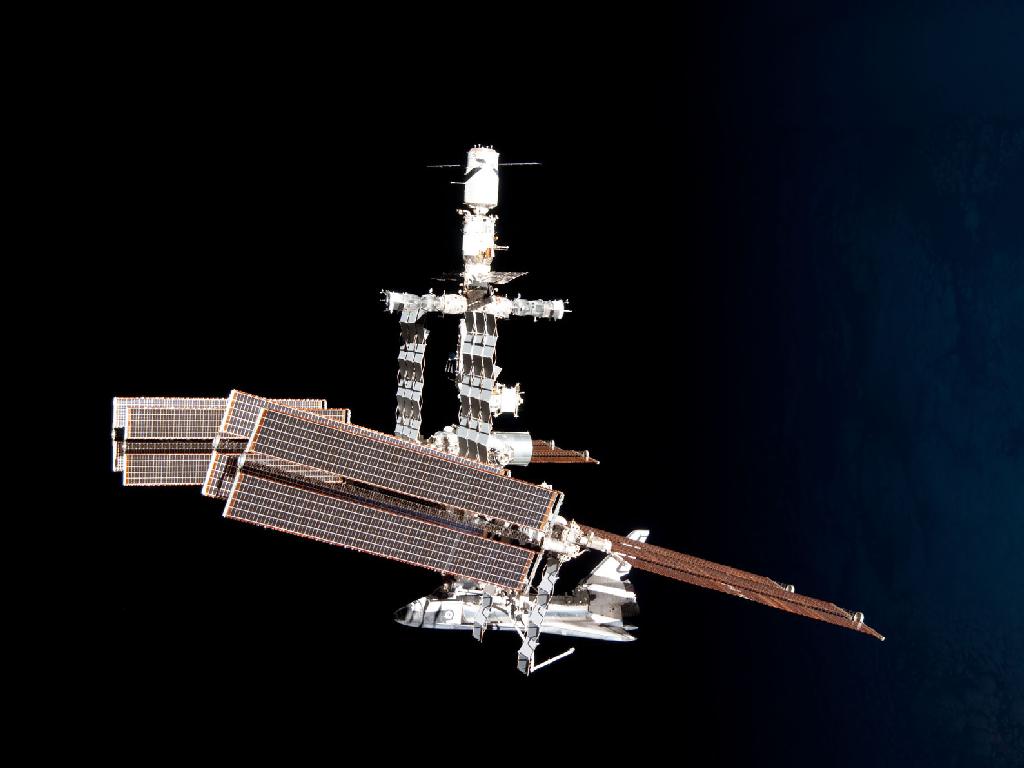
- #INTERNATIONAL SPACE STATION HOW TO#
- #INTERNATIONAL SPACE STATION MANUAL#
- #INTERNATIONAL SPACE STATION FULL#
Think about an interesting foreground for the image. If the ISS passes directly overhead, you may want to capture the ISS as it meets the horizon, creating a vertical band of light in the completed image. If it’s arcing close to the horizon, then you may consider a wide angle shot showing the arc juxtaposed with an interesting foreground.
#INTERNATIONAL SPACE STATION FULL#
If you're looking for more guidance on this, we have a full article on lens heaters for astrophotography (opens in new tab).įirst, consider the angle of the ISS pass. You are generally more likely to encounter this on longer shoots, such as capturing star trails, but you’d be surprised how quickly dew can form. These are inexpensive USB-powered devices that prevent moisture - ice, dew or fog - from forming on the front of your lens during your shoot. For the sharpest possible image, this is an important gadget to have in your arsenal. This can be a cable plugged into your camera or a remote control that allows you to capture images without physically touching your camera.
#INTERNATIONAL SPACE STATION MANUAL#
A DSLR or mirrorless camera with full manual control.Therefore at the bare minimum you will need: The ISS is a bright point of light in the sky - any lens will be able to capture it, but the faster the better. Photographing the ISS does not require specialist or expensive equipment. What equipment do you need to photograph the ISS? It also has a handy alert service, that will send you either emails or texts when the station it visible from your location. NASA’s own Spot The Station (opens in new tab) is an alternative which provides a simpler interface and a live tracking feature, which lets you see where the station is currently floating above the earth. If there are any visible passes at your location, the website will tell you the times and directions. Then, back on the homepage, click ISS under 10-day predictions.

On the site's landing page, click on 'Change your observing location' and select where you’ll be photographing from. It has a slightly dated interface, but it's still relatively easy to use. Heavens Above is arguably the best known and most detailed website for tracking the ISS. As you can see from the image below, it can be a really useful tool for visualizing your compositions ahead of time. One of our favorite options is James Darpinian’s See A Satellite Tonight, a very clever website which allows you to select a location and it will not only show you a Google Earth view showing how the ISS will look from space, but a Google Street View with a simulation of how the ISS (and many other satellites) will look as they pass overhead.
#INTERNATIONAL SPACE STATION HOW TO#
For more information on how to see and track the International Space Station, check out our informative guide.

How to find the ISSįortunately, you don’t need a degree in astrophysics to calculate where the ISS may travel on a particular night - several websites do all the hard work for you. Here’s how to photograph the ISS - from planning to shoot to editing. Since the path of the ISS can be calculated, this means that with some planning, the right gear and clear skies, it can be a striking subject to photograph. In the hours after sunset or before sunrise, the Station remains lit by the sun while the Earth is still in darkness. The ISS is often visible from Earth as a point of light slowly and silently traversing the sky.


 0 kommentar(er)
0 kommentar(er)
